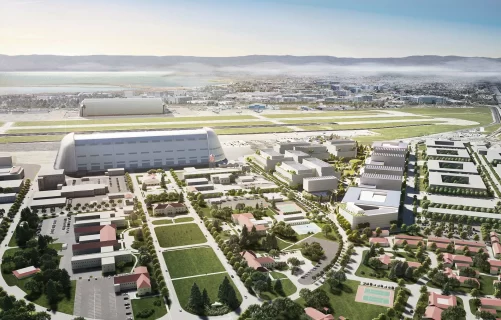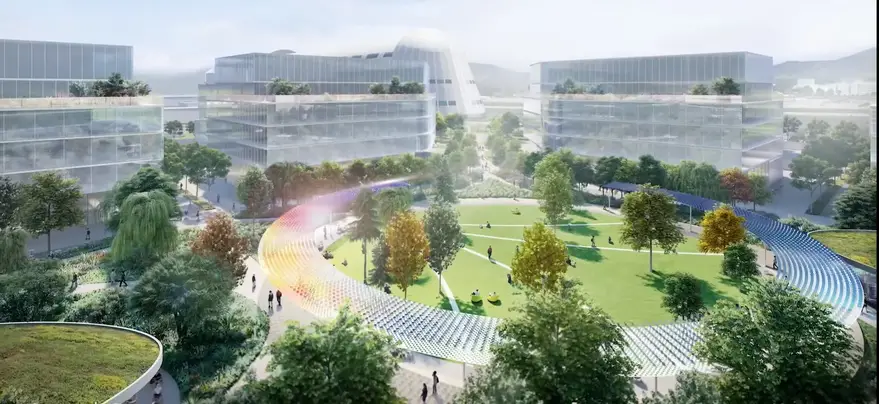The University of California, in partnership with SKS Partners and NASA Ames Research Center, reveals plans for the Berkeley Space Center at NASA Ames Research Center. This ambitious $2 billion project will reshape research, innovation, and education. Located in Mountain View, California, within NASA’s Ames Research Center, the Berkeley Space Center aims to be a vibrant hub for collaboration and technological progress. It will focus on aviation, space exploration, climate science, and social sciences.
The Berkeley Space Center is a visionary 36-acre innovation hub that brings together academia, private industry, and government in a dynamic partnership aimed at pioneering tomorrow’s technological breakthroughs. This ambitious project serves as a focal point for collaboration, combining the research capabilities of academia and government with the innovation, entrepreneurship, and financial resources of the private sector. It represents the embodiment of Berkeley’s commitment to promoting innovation and entrepreneurship across a wide spectrum, with the ultimate goal of swiftly translating research discoveries into tangible goods and services that benefit the public while simultaneously generating new opportunities.
The center’s holistic approach underscores the significance of cross-sector collaboration in advancing technology and its real-world applications. By fostering cooperation among diverse stakeholders, the Berkeley Space Center has the potential to expedite progress and create an environment where innovation thrives, ultimately leading to tangible benefits for the broader society. This initiative exemplifies the power of shared knowledge, resources, and entrepreneurial spirit, pushing the boundaries of what can be achieved through collective effort and visionary thinking.

Expected construction start on Berkeley Space Center
Construction depends on an environmental review and is expected to start in about three years. The University of California will use about 10% of the 130,000 square meters for offices and R&D. The plan includes 1.4 million square feet of Class-A and R&D spaces, a conference center, academic facilities, retail outlets, and nearly 18 acres of open space.
One notable feature is the Berkeley Space Center’s potential to host UC Berkeley classes. Promoting collaboration between students and industry leaders. UC Berkeley Chancellor Carol Christ is enthusiastic about the opportunities this expansion presents.
Read also: New NASA Flight Dynamics Research Facility to be developed in Langley
UC Berkeley has already invested around $1 million in the project, covering faculty, staff, student salaries, and academic planning. The $2 billion budget for the next decade will come from various private funding sources.
Furthermore, the Berkeley Space Center will provide retraining opportunities. Aerospace engineers with older degrees may seek to update their expertise in areas such as machine learning, artificial intelligence, data science, computing, and space robotics.
In summary, the Center promises to revolutionize research, innovation, and education. It reflects the strong commitment of the University of California, SKS Partners, and NASA Ames Research Center to pioneering advancements in research and technology.

